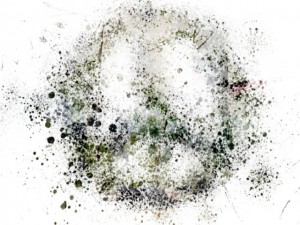
Flesh-Eating and Fetishes: Doing Justice to the Reasonableness of Cannibalism
by Tess Little | January 17, 2015
It sounds like the beginning of a distasteful joke. What do a petty criminal, a Swedish professor, a porn star, and a room full of auctioneers all have in common? The truth, however, is far from humorous: all of them have consumed human flesh.
The subject of cannibalism rose to renewed prominence this summer with news coverage of the ‘Miami Zombie’. On May 26, Rudy Eugene assaulted Ronald Poppo, a homeless 65-year-old, on the MacArthur Causeway in Miami, Florida. Records of the 18-minute encounter show a nude Eugene, accusing Poppo of stealing his Bible, beating him unconscious and proceeding to consume his face. It ended with police fatally shooting the attacker. Today, speculation still surrounds the issue of exotic drugs such as ‘bath salts’ and their part in Eugene’s aggression, but so far toxicology tests of his corpse have detected only marijuana.
A cursory glance at the headlines surrounding the story illustrates our curiosity with the fantasy element of the phenomenon of cannibalism. ‘Rise of the Zombie Flesh-eaters’ read one newspaper, as Google searches for ‘zombie apocalypse’ rose drastically. We are fascinated by the grotesque, supernatural aspect of cannibalism, something which only enters our awareness through sensational articles and gory films.
There are plenty of sensational stories out there. In addition to the ‘Miami Zombie’ there’s the cuckolded Swedish professor who consumed his wife’s lips in a jealous rage; the porn star Luka Magnotta for whom cannibalism was the ultimate fetish; or the asexual Mao Sugiyama, who served his own genitals – with buttoned mushrooms and parsley – to guests in a restaurant after inviting participants via Twitter. These ‘flesh eaters’ differ from cases such as the 1972 Andes flight disaster, where fellow humans were eaten to prevent death from starvation.
Incidents of cannibalism are rarely discussed in the public sphere as a phenomenon with motives and explanations. We do not want to acknowledge that individuals in our society would choose to consume fellow human beings, even though.the fantasy of eating human flesh is more common than actual occurrences, as the internet popularity of fetish sites such as ‘Dolcett Girls’ and ‘Muki’s Kitchen’ testify. We may wish to avoid the matter, but the truth still stands: many people are enthralled by the idea of cannibalism.
In 1994, Nicolas Claux was convicted of the murder of Thierry Bissonier. After his arrest, police searched his apartment, unprepared for the gruesome store of human remains they were to find. Claux had been robbing Parisian graveyards and mutilating the remains. He also worked at one of the city’s morgues, and admitted to stealing flesh from the corpses. “I had been using my position,” Claux explained, “as a means to fulfil a lifelong fantasy of mine revolving around cannibalism.”
“Sometimes I brought select meats home with me to be cooked,” he continued, “but my preference was to eat them raw. It tasted like steak tartare, or carpaccio. The big muscles of the thighs and back were good, but there was no good meat in the breasts, only fats.” Claux’s can be classified as epicurean, or nutritional, cannibalism, where the motivation is either the taste of human flesh or its nutritional value.
However, as the case of Claux illustrates, epicurean tendencies are only evident through the rhetoric of the accused, and we find that such language is common to most acts of cannibalism. Issei Sagawa, the infamous Japanese cannibal, tried to making a living from the public interest in his crime once he was released from prison. He described his victims’ flesh as having “no smell or taste, melting in my mouth like raw tuna.” As he wrote in his best-selling account of the act, “nothing was so delicious.”
Before he consumed his victim’s flesh, Sagawa had sexually assaulted her corpse. Considered a psychosexual disorder, the theory of sexual cannibalism holds that the perpetrators use it to release sexual frustration. Several high profile cases involving sexual cannibalism have captured the media’s attention. Perhaps most memorable is that of Albert Fish, who raped, murdered and consumed children in early twentieth-century America. During his trial, several psychiatrists testified on the matter of his sexual fetishes. His defence counsel James Dempsey described him as a ‘psychiatric phenomenon’, because no other individual possessing his number of sexual abnormalities could be found anywhere in medical or legal records.
The cannibalism of Edward Gein, inspiration for film characters including Jame Gumb of The Silence of the Lambs, Psycho’s Norman Bates, and Leatherface from The Texas Chainsaw Massacre, was certainly motivated by sexual gratification. He murdered at least three people, and the remains of over fifteen other women were found in his house, stolen from a nearby cemetery. Just like his fictional offspring Gumb, he found delight in dismembering the bodies and peeling away the skin of the corpses so that he could wear them around his household. Whether Gein sexualised the actual consumption of his victims was unclear. However, it is evident that there was a strong relationship between his necrophilia and cannibalistic behaviour.
Whether these cannibals achieved sexual euphoria through the consumption of flesh, or if it was simply an enabler, is a question currently debated in academic circles. One response is to go to the source for answers. ‘Muki’s Kitchen’ is a website self-professedly dedicated to “cannibalism as an erotic fantasy: good old-fashioned woman-eating, femme-feasting, girl-gobbling fun!” Original photos are published of female models posed as dishes ready to be eaten. The proprietors of the site, Mr. and Mrs. Muki, however, stress that they would never condone physical cannibalism: “It should always stay a fantasy.”
This differs from the ‘Cannibal Café’, an online forum closed by German authorities in 2002 but still available through internet archives. This open website allowed cannibals to connect with those who wished to be eaten. ‘Girlmeat Wanted’ reads one post, while another user asks to be eaten. “I would like to be served up at a BBQ,” he comments, “mounted on a spit and lightly roasted.”
Mr. Muki explains the origin of this fetish. “The physical sensations of mild fear are similar to arousal. Although it wasn’t about me attracting and eating women. I was the main course.” He points out that children’s stories, from fairy tales to Looney Tunes, often include the punishment of being eaten. “I remember I was in the third grade,” Mr. Muki continues, “and our teacher was reading a children’s version of Robinson Crusoe. The whole idea that Friday was a cannibal and was about to be eaten. And then, adding to that, the thought that I could be eaten by other people, who might be very nice to each other and their friends, and would take the time to prepare a human body, cook it properly, and then serve their roast in a “civilized” manner, laughing and talking as they enjoyed their feast — how exotic! And in my case, erotic!”
Meghan Vaughan, a model for ‘Muki’s Kitchen’ describes being cooked as her “foreplay”. Again, she stresses the imaginary element of her work. “A lot of what I do is be still,” she explains, “not in a necrophiliac way, but in a passed-out way.” As this dormancy suggests, most fantasies and acts of cannibalism are motivated by a desire for dominance over the victim.
Dr. Deborah Schurman-Kauflin, a criminal profiler, agrees with this theory. “Cutting up the meat is sexually exciting, according to cannibals. It makes them feel all-powerful and capable of something very few people have ever done.” The cannibal knows the unique dominance they hold over their victims and this “produces a euphoric state which activates the pleasure centre in the brain. Each cut brings more good feeling. So it is common to find many smaller cuts on the body.” She also points out the tendency for cannibals to store the bodies of their victims, as in the cases of Gein and Sagawa. The offender keeps “the victims with him at all times. They can never leave. This helps the cannibal retain a sense of control over his life. To himself, he has demonstrated mastery over another human being. The victim is now part of him as a trophy.”
Schurman-Kauflin and other professionals have long debated the cause of this aggression. Some cite childhood trauma, others hold personality disorders solely responsible. Many cannibals, such as Albert Fish, Edward Gein, and Issei Sagawa, were diagnosed with schizophrenia. Mr Muki points out that an attraction to tension, fear, domination or being dominated is common. When asked ‘why cannibalism?’ Mr Muki replies with a question of his own: “Why does balloon fetish even exist?” He maintains his is just one strange fetish among many, although more extreme than most.
A lack of research into these theories has resulted in a lack of understanding. Yet no single theory can fully explain why individuals are fascinated by, and sometimes go ahead with, eating human flesh. As the anthropologist Ruth Benedict declared, “We have done scant justice to the reasonableness of cannibalism. There are in fact so many and such excellent motives possible to it that mankind has never been able to fit all of them into one universal scheme.”
Image by Megan Diddie




